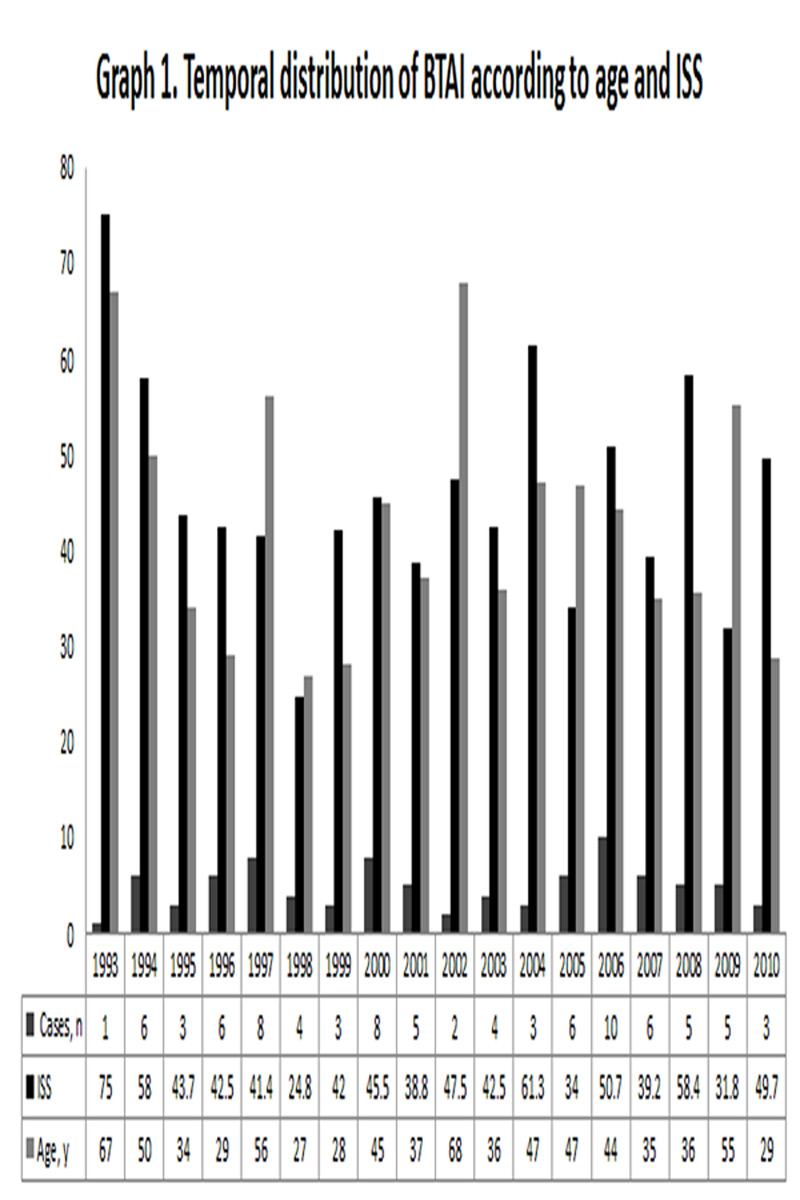 |
|
|
Back to Annual Symposium Program Early outcomes of Blunt Thoracic Aortic Injury over an 18-year period: A Prospective Level 1 Trauma Center Experience Rafael D. Malgor, MD, Thomas V. Bilfinger, MD, Jane McCormack, RN, Marc J. Shapiro, MD, Apostolos K. Tassiopoulos, MD. STONY BROOK MEDICAL CENTER, Stony Brook, NY, USA.
OBJECTIVES: To review the natural history of Blunt Aortic Thoracic Injury (BTAI) and its management over an 18-year period.METHODS: Prospective data of 88 (0.3%) patients with a confirmed diagnosis of BTAI among 26,020 trauma patients from January 1993 to December 2010 were reviewed. Excluded were patients with penetrating aortic injury or those who were either younger than 18 or older than 80. Outcomes of interest were demographics, use of safety devices at the time of injury, type of repair (conservative, open repair (OR) or endovascular treatment (ET)) and the impact of concomitant injuries using the Injury Severity Score (ISS). RESULTS: Sixty-three (72%) patients with BTAI were male and the median age was 38±17. The most prevalent mechanism of trauma was motor vehicle collision in 65 (74%) patients, followed by motorcycle crash (13, 15%) . Airbag deployment, use of seatbelt or both were found in 48% and helmet use in 69%. Sixteen patients with elevated ISS were pronounced dead in the emergency department after initial assessment (Mean ISS, 69 dead vs 39 alive; P<.0001). Graph 1 depicts a temporal distribution of cases coupled to age and ISS, and comparative data on type of repair are found in Table 1. The overall mortality of hospitalized patients with BTAI was 32%. Initial ISS was higher in the hospital mortalities compared to that of discharged patients (47±19 in patients that died, versus 35±14 in those alive; P<.001). Of those discharged from the hospital, 33 (67%) went to a rehabilitation center or were transferred to another hospital, and 16 (33%) went home. CONCLUSIONS: The incidence of BTAI in trauma admissions is low but has a significant impact on morbidity and mortality, with reduced length of hospital stay and lower mortality rates found in the ET group despite similar ISS. The majority of patients with BTAI who survived hospitalization had a lower ISS and were discharged to rehabilitation or another facility rather than home.
 Back to Annual Symposium Program
|
||||||||||||||||||||||||||||||||||||||||||||||||
© 2025 Society for Clinical Vascular Surgery . All Rights Reserved. Privacy Policy.
